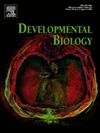早期禽类胚胎卵黄囊脉管系统为肿瘤外渗分析提供了新的模型。
IF 2.5
3区 生物学
Q2 DEVELOPMENTAL BIOLOGY
引用次数: 0
摘要
血液转移是癌细胞的一个特征,涉及一系列复杂的迁移步骤,包括内渗、循环、血管停泊和跨内皮迁移(TEM)——后两者统称为外渗。在这些步骤中,由于其不可预测的时间和位置,外渗对羊膜动物(如人类和小鼠)的成像构成了重大挑战,这限制了我们对潜在细胞和分子机制的理解。因此,在羊膜中开发一种具有高分辨率成像能力的新型癌症载体模型是必不可少的。在这项研究中,我们研究了早期鸟类胚胎(鸡和鹌鹑)的卵黄囊脉管系统(YSV),利用其优越的成像能力,作为研究外渗的创新模型。我们评估YSV的结构并应用荧光标记来提高可视性。随后,将癌细胞导入YSV,并监测其行为,揭示与外渗相关的独特形态和动力学。此外,YSV模型在外渗研究中表现出高度的定量精度,并显示出药物筛选应用的潜力。我们的研究结果表明,YSV模型有望作为一个新的平台,通过先进的成像技术来阐明参与癌症转移的细胞和分子机制。本文章由计算机程序翻译,如有差异,请以英文原文为准。
The yolk sac vasculature in early avian embryo provides a novel model for the analysis of cancer extravasation
Hematogenous metastasis, a hallmark of cancer cells, involves a complex series of migration steps, including intravasation, circulation, arrest in blood vessels, and trans-endothelial migration (TEM)-the lattar two collectively referred to as extravasation. Among these steps, extravasation poses significant challenges for imaging in amniotes such as humans and mice due to its unpredictable timing and location, which limits our understanding of the underlying cellular and molecular mechanisms. Thus, the development of a novel cancer carrier model with high-resolution imaging capabilities in amniotes is essential. In this study, we investigated the yolk sac vasculature (YSV) of early avian embryos (chickens and quail) as an innovative model for studying extravasation, capitalizing on its superior imaging capabilities. We assessed the YSV structure and applied fluorescent labeling to improve visibility. Following this, cancer cells were introduced into the YSV, and their behavior was monitored, revealing distinct morphologies and dynamics associated with extravasation. Furthermore, the YSV model exhibited a high degree of quantitative precision for extravasation studies and demonstrated potential for drug screening applications. Our findings indicate that the YSV model holds promise as a novel platform for elucidating the cellular and molecular mechanisms involved in cancer metastasis through advanced imaging techniques.
求助全文
通过发布文献求助,成功后即可免费获取论文全文。
去求助
来源期刊

Developmental biology
生物-发育生物学
CiteScore
5.30
自引率
3.70%
发文量
182
审稿时长
1.5 months
期刊介绍:
Developmental Biology (DB) publishes original research on mechanisms of development, differentiation, and growth in animals and plants at the molecular, cellular, genetic and evolutionary levels. Areas of particular emphasis include transcriptional control mechanisms, embryonic patterning, cell-cell interactions, growth factors and signal transduction, and regulatory hierarchies in developing plants and animals.
 求助内容:
求助内容: 应助结果提醒方式:
应助结果提醒方式:


